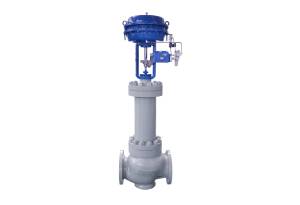May. 20, 2021
The Way To Choose a Valve
Most of the media in chemical production equipment are highly toxic, flammable, explosive, highly corrosive, complex and harsh working conditions, and high working temperature and pressure. Once the valve fails, it will also cause medium leakage in the lightest case, and stop the production of the devices in serious cases, or even cause serious accidents. Therefore, the scientific and reasonable selection of valves can not only reduce the construction cost of the device but also ensure the safe operation of production.
Key points for valve selection:
1. Define the use of valves in the equipment or device:
Determine the working conditions of the valve: the nature of the applicable medium, working pressure, working temperature, and control method.
2. Choose the right valve type
The correct choice of valve type is a prerequisite for the designer to fully grasp the entire production process and operating conditions. When selecting the valve type, the designer should first grasp the structural characteristics and performance of each valve.
3. Determine the end connection of the valve
The first two are the most commonly used threaded connections, flanged connections, and welded connections. Threaded valves are mainly valves with a nominal diameter of less than 50mm. If the size of the pipe diameter is too large, it is difficult to install and seal the connection.
Flange-connected valves are more convenient to install and disassemble, but they are heavier and expensive than screw-connected valves, so they are suitable for pipe connections of various diameters and pressures.
Welded joints are more reliable than flanged joints and are suitable for more demanding conditions. However, the disassembly and assembly of welded valves are more difficult, so its use is limited to places that can usually operate reliably for a long time, or where the conditions are high and the temperature is high.
4. Selection of valve material
When selecting the material of the valve housing, internal components, and sealing surface, in addition to considering the physical properties (temperature, pressure) and chemical properties (corrosiveness) of the working medium, the cleanliness of the medium (with or without solid particles) should also be considered. In addition, it is necessary to refer to the relevant regulations of the state and user departments.
The correct and reasonable selection of valve materials can obtain the most economical service life and the best valve performance. The valve body material selection sequence is cast iron-carbon steel-stainless steel, and the seal ring material selection sequence is rubber-copper-alloy steel-f4.
In addition, the flow rate and pressure level of the fluid flowing through the valve should be determined, and existing data (such as valve catalogs, valve product samples, etc.) should be used to select the appropriate globe valve.
We are globe valve suppliers. Please feel free to contact us if you are interested in our products.

Headquarter Add.: SUPCON Park, No.309 Liuhe Road, Binjiang District, Hangzhou, 310053, China.
Tel.: +86 571 8111 9774
Fax: +86 571 8111 9737
E-mail: [email protected]
